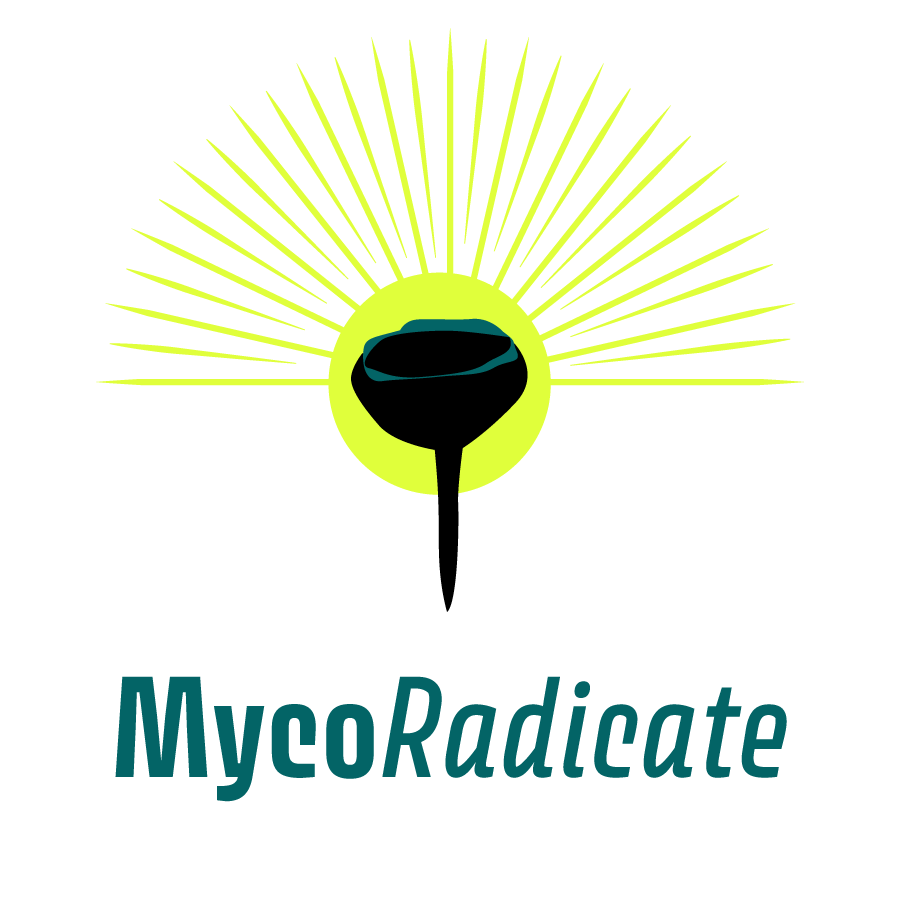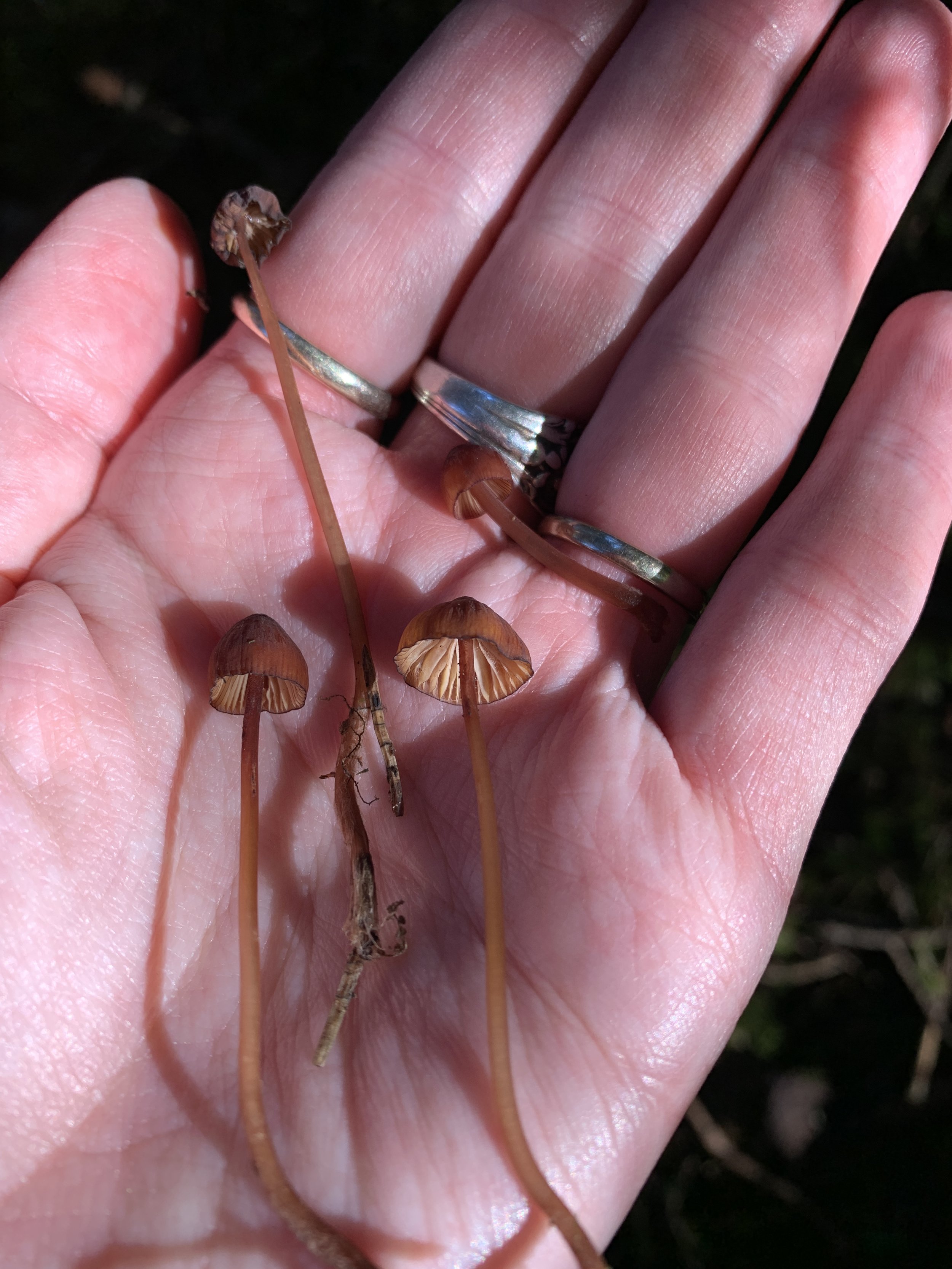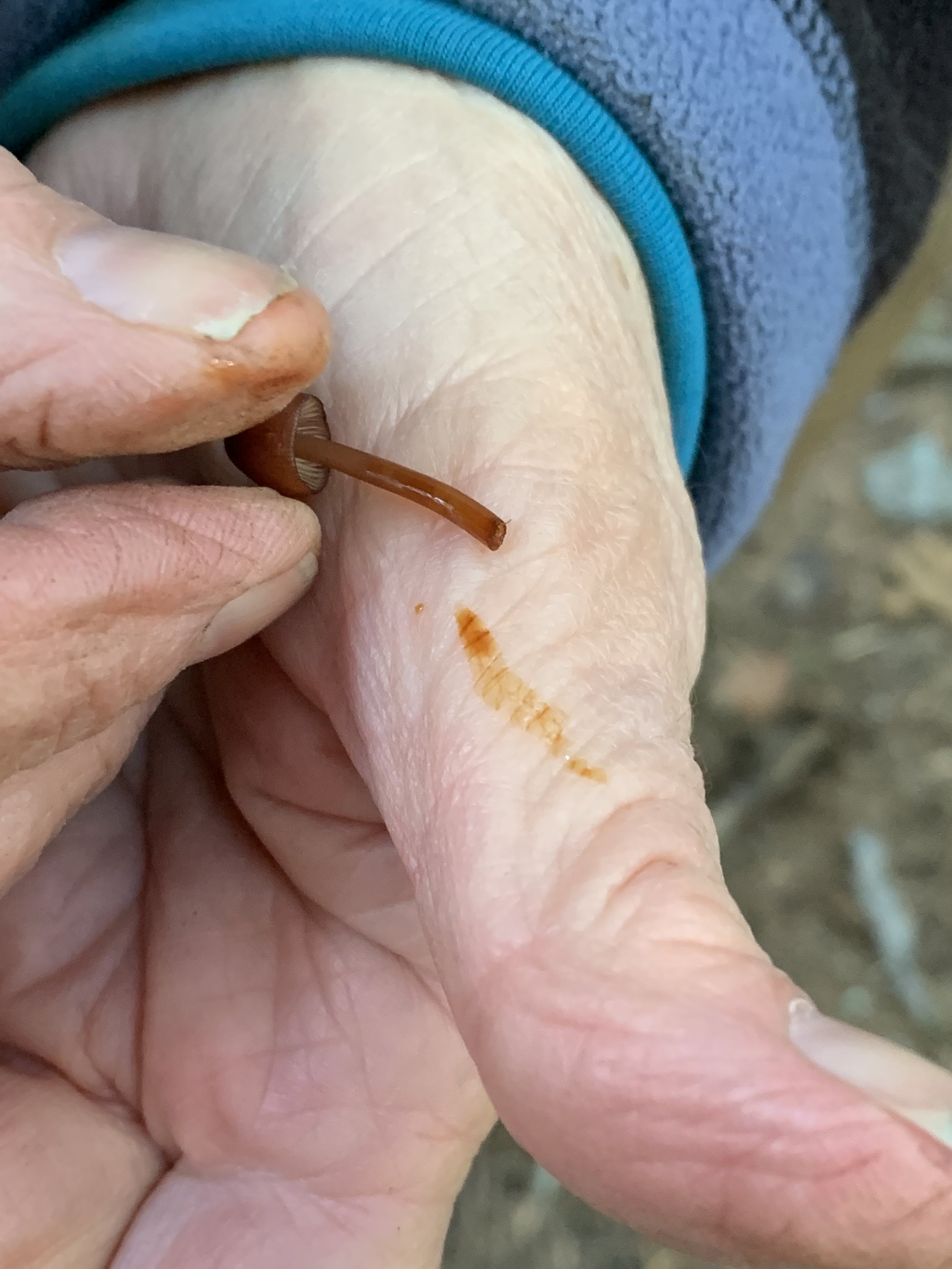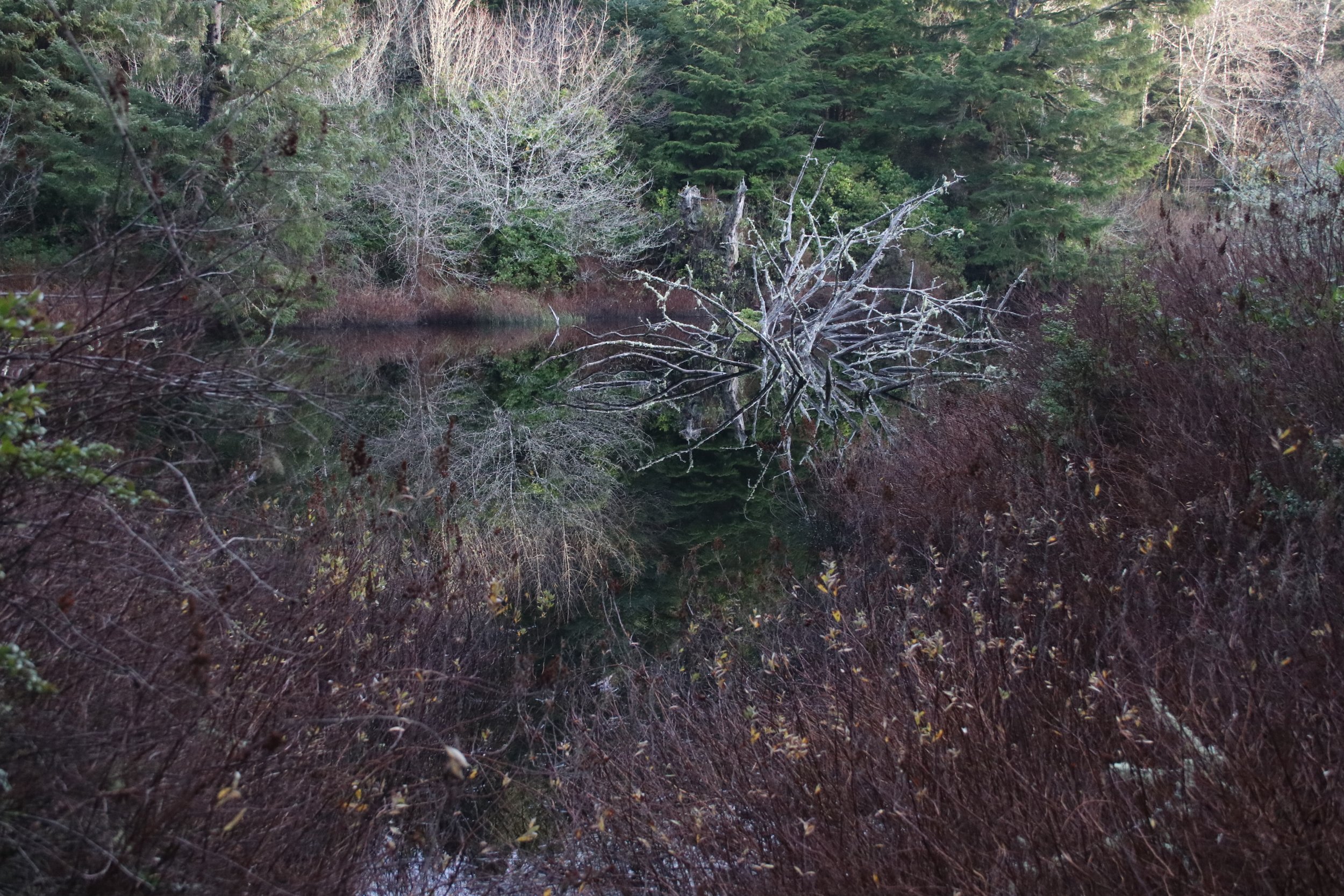Foray Log 127.2022 - Northern Oregon Coast
Geoglossum
Foray Log- Northern Oregon Coast, January 27, 2022
Diana and I decided to take a day together and look for ectomycorrhizal connections and winter fungi growing along the coast. We were looking for signs of the hyphae that would have capped the root ends of trees and made their way into the wood wide web. On our first stop we spent a lot of time discussing what habitat we were standing in and how to identify trees. We were standing in a Cedar, Western Hemlock and Spruce forest, with old growth stumps as big as yurts. Beside all of the slash piles we found the Western Hemlocks used old fallen and decaying logs as their nursery, while the Cedar did not.
Cedar is one of those trees that does not foster an ectomycorrhizal connection with fungi. So as we looked at the fungi that was present in this forest we began to see the connections in a whole new light. The spongy forest floor was full of needle litter and moss and very little light was coming through this dense canopy. We spotted some mycenoid type fungi and the ever present saprotrophic fungi, Hypholoma fasciculare, growing on a decaying stump.
As we moved back on to the path, I stopped and noticed the little black club sticking up from the humus. These 2 inch tall clubs were scattered in an area all over the ground. When we laid down to see them, we could see hundreds of them in various stages of maturity covering a 25 foot patch. These black clubs are either Geoglossum or Trichoglossum and I can never tell the difference until I see the spores under the microscope. The Geoglossum have long skinny spores with sections, called septates, and only have 7 of them. The Trichoglossum will have about 15 septates in the spores. The shape of the spores help get me to species, but I can not say for sure what I have until I do a DNA analysis on them.
We traveled down the road another 20 miles or so to walk through an old growth forest that has some beautiful Hemlock and Spruce mother trees. These trees have been through the last great earthquake that hit the Cascadia Subduction Zone in 1700, and were here before colonization displaced the native people of this land. These trees would have been about 40 years old during that earthquake and standing over 100 ft tall. Now they are giants in this forest and we could see their future generations scattered on nurse logs next to the huckleberry and salal.
As we wondered through the old growth trail, we came across a small gilled wood rotter and some newly forming Fomitopsis mouncea. These were growing on fallen logs that were as tall as I was. The decomposition for those large logs will take that fungi hundreds of years.
While exploring off the trail, I found a small patch of Mycena sanguinolenta or the “Bleeding Mycena”. This little reddish brown mushroom stands in small troops in the mossy duff. If you pick a fresh specimen and pinch off the end of the stipe, and squeeze it, a reddish orange liquid will ooze out. Other common grey Mycena’s will ooze out a clear liquid when pinched and squeezed. The margins of the M. sanguinolentas are particularly pretty. They have this reddish purple ring that perfectly lines it. The gills are also discolorous or have a darker edge to them. They are a striking mushroom once you get to know them.
We followed the path over a small babbling brook that was so deep under the canopy of trees that we could barely see the sunlight. As we rounded the bend we were greeted with a blinding light that was coming from the tunnel we had to walk through that was an old tree held up by it’s giant rootball. Just on the other side the canopy opened to a wall of ferns and a glorious Spruce mother tree bathed in sunlight.
Our day ended with a quick walk through South Beach State park where we did not find any fungus except some dried up polypores.
Resources:
Bonfante, P. & Genre, A. Mechanisms underlying beneficial plant–fungus interactions in mycorrhizal symbiosis. Nat. Commun. 1:48 doi: 10.1038/ ncomms1046 (2010). https://www.nature.com/articles/ncomms1046.pdf
Cession 479 https://digitreaties.org/treaties/presenttribe/Confederated%20Tribes%20of%20the%20Siletz%20Reservation,%20Oregon/
https://native-land.ca/maps/treaties/cession-479/
Tree rings from old growth Douglas-firs on the Oregon Coast show evidence of 1700 tsunami https://www.pmel.noaa.gov/acoustics/news-story/tree-rings-old-growth-douglas-firs-oregon-coast-show-evidence-1700-tsunami
Tsuga heterophylla https://en.wikipedia.org/wiki/Tsuga_heterophylla
Art of the day
“Habitat” -Digital Photograph by Autumn Anglin











